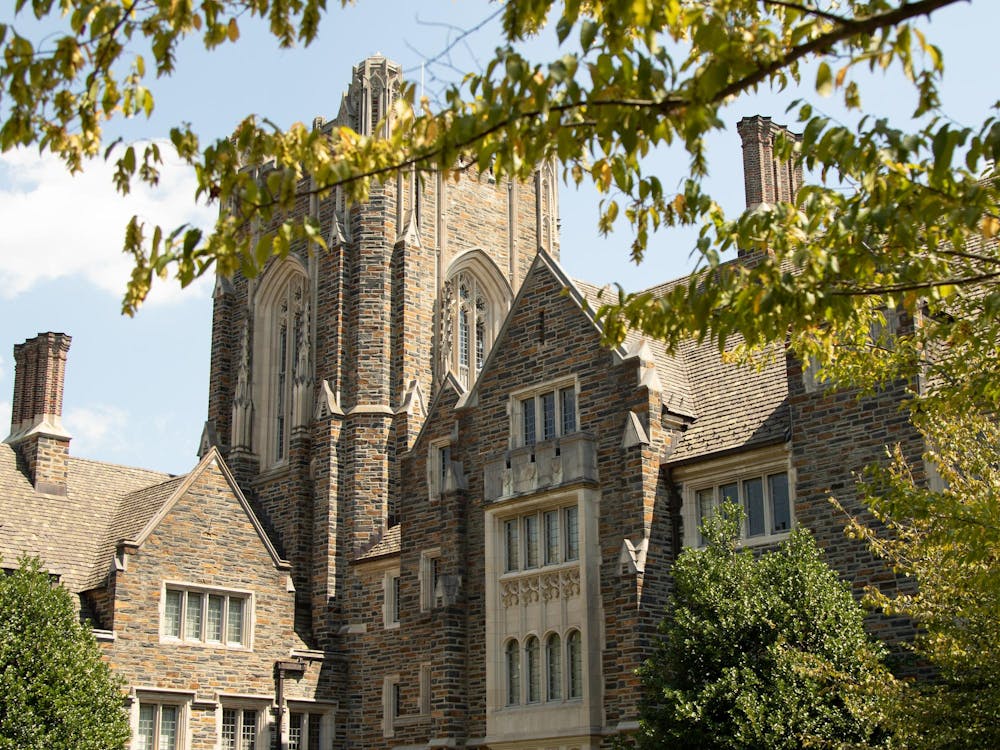For the approximately 50 transfer students welcomed on campus each year, Duke is not their first college rodeo. But what makes the transfer student experience unique?
Transfer students enter Duke through a process about as competitive as first-years', with a 4% acceptance rate in the 2022-23 application cycle. While just as qualified as other Duke students, transfer students also bring a unique degree of creativity, according to Claire Siburt, academic dean for Trinity College transfer students.
“There’s a lot of really fabulous critical thinkers amongst the transfer students that are coming in with the experience they had wherever they were … with a new perspective on ‘why does it work like that,’” she said. Siburt emphasized the importance of being open to the creative conversations that transfer students can offer.
Students often transfer to Duke in search of more academic rigor or a course of study their previous institution didn’t offer, according to Siburt. Other reasons include athletics, location or a specific set of professors a student wants to work with.
The moment transfer students receive their offer letter, they are immersed in a tight-knit community of advisors and peers.
“We’ve really increased the amount of face-to-face contact that we’re able to provide over the summer,” Siburt said. “Our biggest success … is how much we have changed the staffing around bringing students into the University, both in terms of creating advisor connections, but also adding more academic deans to the process.”
Student experiences
For Siburt, strong student leaders also play an important role in maintaining community through social programming.
One program working to create strong student leaders is Project Transfer, a new weeklong Experiential Orientation program for transfer students that encourages students to learn more about Duke and explore local spots in Durham, such as the Durham Food Hall and the Eno River.
Junior Addie Geitner, a transfer from the University of North Carolina at Chapel Hill and co-director for Project Transfer, cited educational opportunities in urban planning — her academic field of interest — as her main motivation to transfer.
“It was very pleasant. It was really easy to kind of get right into things,” she said about her first year at Duke. “The sort of things I'd been interested in, like urban studies clubs and programs and the Duke campus farm, ended up being very easy to jump in with. Everyone was super welcoming.”
Geitner acknowledged that Duke’s campus community was “more insular” than she was expecting coming from UNC-Chapel Hill, but that the transfer cohort and getting involved in clubs at Duke made the transition easy.
Overall, she reflects on her experience at Duke as overwhelmingly positive. As part of her role in Project Transfer, she planned events for her peers and enjoyed seeing how the week allowed students to get acclimated to the campus, adding that it was "fun watching people do what you've done, watching them meet new people and seeing that work out for them.”
Junior Marley O’Connor transferred from the University of North Carolina at Greensboro for Duke’s expanded offerings in art history.
For O’Connor, the Project Transfer network was fundamental in getting her questions answered as she navigated her first week this fall.
“Half of my classes are in Smith Warehouse as an art history person, [and] there’s really no information online about it,” O’Connor said. “[Geitner] gave me a whole list of times and a link to transportation [information] … 90% of my worries evaporated right then.”
Transferring course credits
For some transfers, navigating the new academic environment can involve some hurdles. Duke has thorough policies regarding course credit transfers, yet some students are unsure of which courses will count before arriving at Duke. O’Connor described the feeling as being “in limbo.”
“A difficult part was the whole transfer credit process,” she said. “Dean Siburt … has been a rock throughout this whole process, answering all of my questions … because it’s been pretty hard to figure out exactly what courses are going to transfer over.”
Senior Jakobe Bussey, who transferred after his sophomore year at Appalachian State University, described the transfer community at Duke as “very, very tight.”
“They’ve been my closest teammates and my closest buddies,” Bussey said. The community bonded over the fact that “we're all new to this, we’re all trying to figure this out.”
Bussey echoed that it can be difficult to navigate the course credit transfer. He explained that while first-year students take introductory courses, transfer students often go straight into courses for their major.
“There’s no buffer,” he said. “Everything’s make or break.”
Bussey also added that because most programs and clubs primarily market their events to first-years, it was initially difficult to find opportunities as a transfer student.
Ultimately, Bussey considers his Duke experience to be “phenomenal.” He noted that while he never minds talking about his former school, he is fully integrated as a Duke student.
“This is my institution now,” he said. “If you feel like you have what it takes, take the gamble, take the risk, and try to come to [Duke], because it’s going to change your life.”
Get The Chronicle straight to your inbox
Signup for our weekly newsletter. Cancel at any time.

Michael Austin is a Trinity sophomore and managing editor of The Chronicle's 120th volume.

